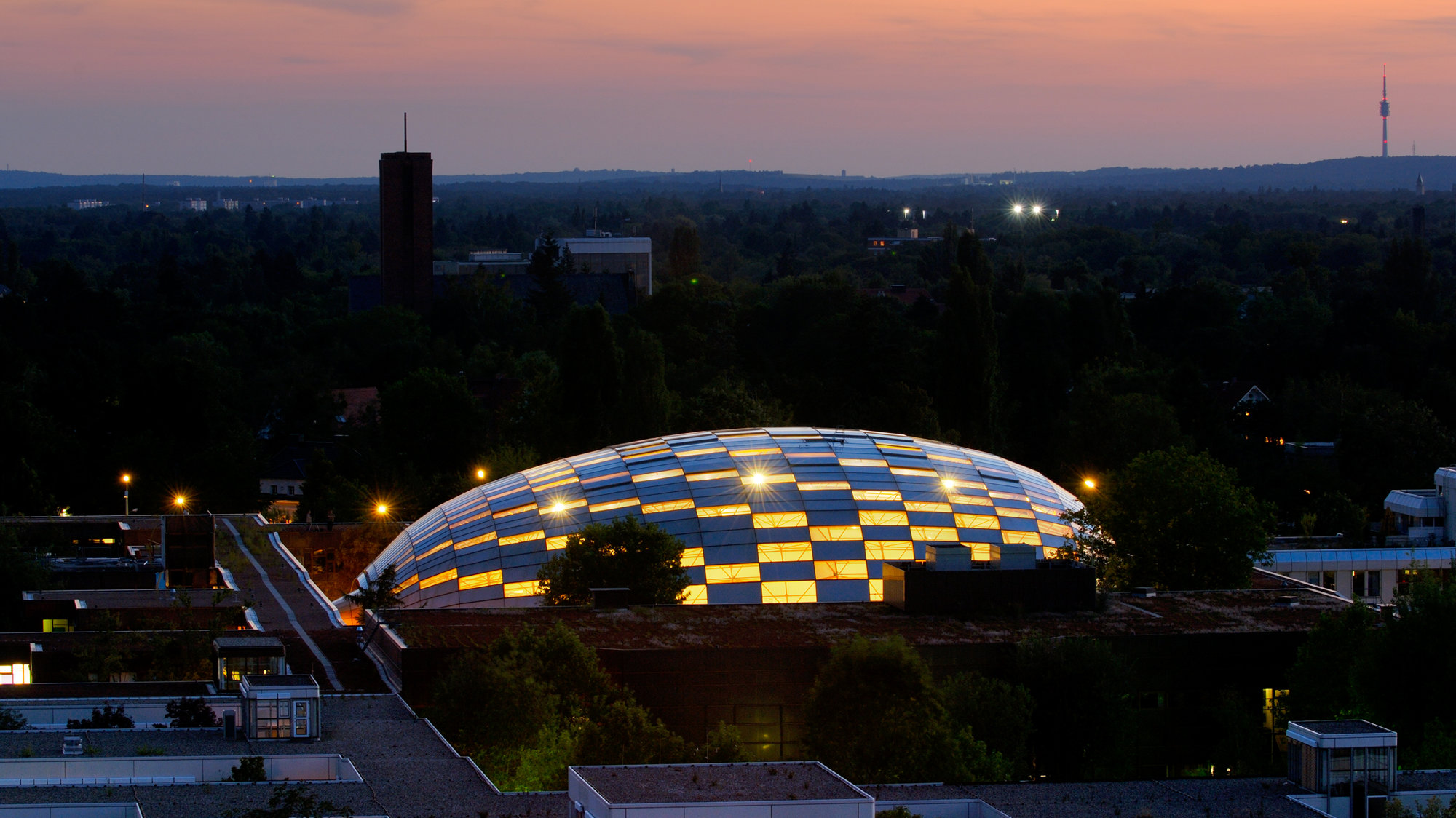Lord Foster, the Lord Mayor of Berlin Mr Wowereit, Mr Strieder, Senator for Urban Development in Berlin and Professor Gaethgens, President of the Free University, marked the beginning of construction of a new library within the existing Free University, Berlin Dahlem, at a ground-breaking ceremony on 6 July.
Since the end of the Second World War the Free University has occupied a central role in the intellectual history of Berlin and it is one of its most symbolically important institutions - its foundation marking the rebirth of liberal education in the city. Today, with more than 60,000 students, it is the largest of Berlin's three universities. Its redevelopment includes the restoration of its Modernist buildings and the design of a new library on the campus.
Six of the University's courtyards have been united to form the site of the new library for the Faculty of Philology. The five-storey building is housed within a free-form skin consisting of aluminium panels, ventilation elements and double-layered glass panels, supported on steel frames with radial geometry. The library's curved form and the cavity between its double skin creates a solar motor, which assists a natural ventilation system. An inner membrane of glass fibre filters sunlight and creates an atmosphere of concentration, while scattered transparent openings allow glimpses of the courtyard.
The University was founded in 1949 in Dahlem, in West Berlin, by the Western Allied Powers to compensate for the loss of the Humboldt University - historically Germany's premier seat of learning - which was isolated in the Soviet sector following the division of Berlin. The University's web-like campus was designed in 1963 by the architects Candilis Josic Woods Schiedhelm, and the first buildings were completed in 1973. The facade, designed by Jean Prouv, followed Le Corbusier's 'Modulor' proportional system and consisted of framed panels in Corten steel, which has self-protecting corrosive characteristics: its rusty appearance led to the affectionate nickname of 'die rostlaube' - the 'rust-bucket'.
However, in the thin sections used here the Corten steel was prone to decay, which by the late 1990s had become extensive. As part of a comprehensive process of renovation the steel panels and framing have been replaced with patinated bronze elements: while these are faithful to the original architects' intentions some details have been sensitively altered to meet contemporary technical requirements and energy-saving standards. The roof will be entirely covered with vegetation to add insulation and improve microclimatic conditions.









